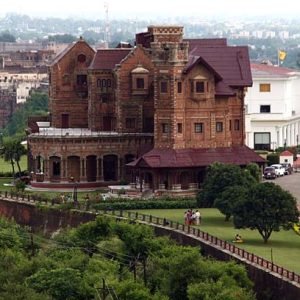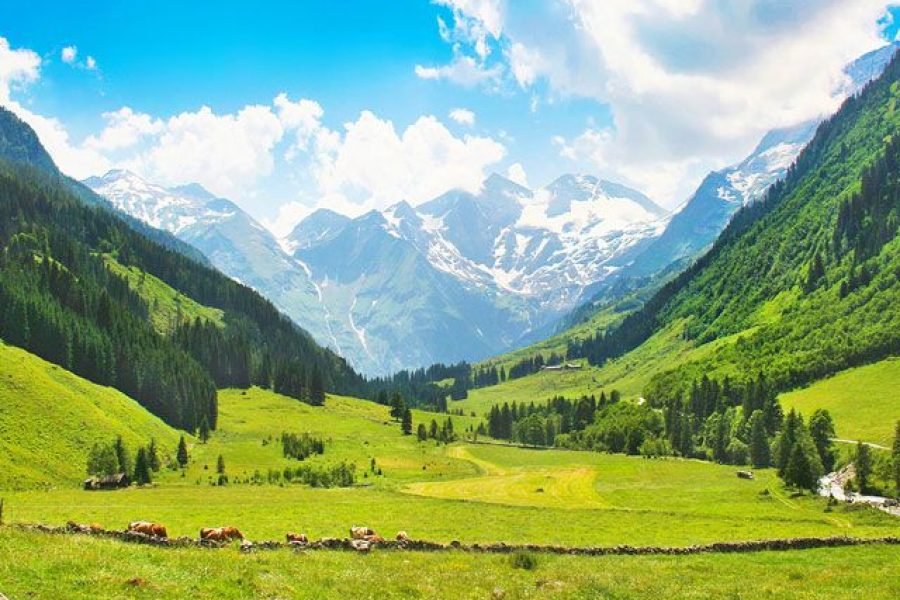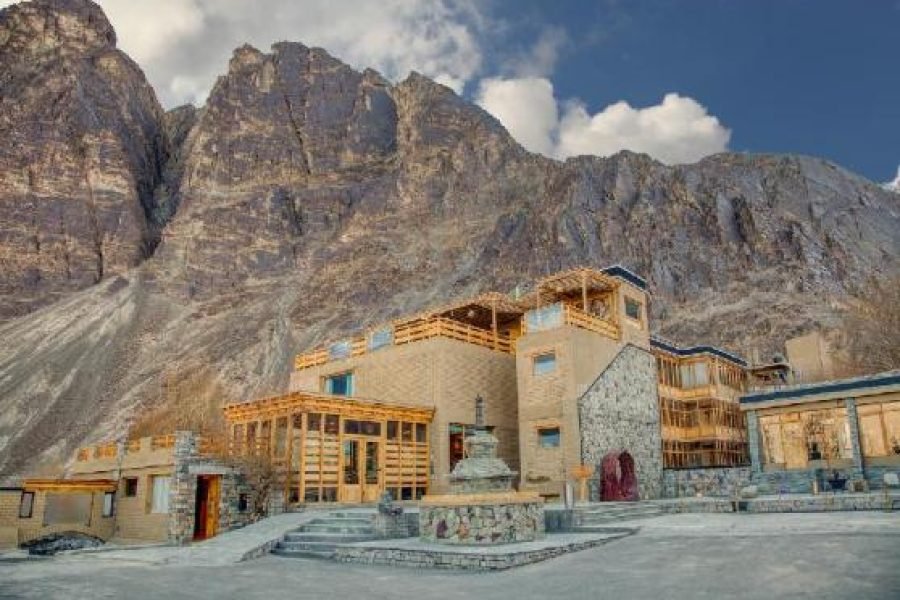Tourist Places in Jammu





Table of Contents
ToggleJammu is the winter capital of Jammu and Kashmir, having a strong blend of the cultural heritage, spiritual essence, and scenic landscapes. Jammu offers lush green meadows, snow clad mountains, ancient temples and historic sites to cater to a broad array of travelers from pilgrims to nature walkers. This guide would express the most striking tourist places in Jammu.
1. Raghunath Temple
Among other great structures of Jammu stands India’s most popular Hindu temple, Raghunath Temple, dedicated to Lord Rama. Built by Maharaja Gulab Singh, but completed by his son, Maharaja Ranbir Singh, this temple is a testament to the passion in the region for the Ramayana. Richly carved and serene in the air surrounding it, Raghunath Temple houses a number of shrines, each and every one dedicated to other deities.
What to see:
i. Gilded interiors of gold
ii. Idols of deities of Ramayana
iii.Daily rituals and aarti ceremony
2. Vaishno Devi Shrine
A journey to Jammu is incomplete without visiting the sacred Vaishno Devi Shrine in the Trikuta Hills. More than 13 km of trek leads from Katra to the cave shrine of Vaishno Devi, the most visited pilgrimage destination in India. The path paved by the authorities is also great and has all the different facilities like food stalls, medical centers and resting points. The journey is an unforgettable experience because of its spiritual ambiance and scenic view of surrounding hills.
What to see:
i. The sacred cave shrine of Mata Vaishno Devi
ii. Bhairon Temple at the summit of the trek
iii.Scenic views of the Trikuta Hills
3. Bahu Fort and Bagh-e-Bahu
Situated on the banks of the Tawi River, Bahu Fort stands as a testimony to Jammu’s ancient history. Constructed by Raja Bahulochan around 3,000 years ago, it was renovated by the Dogra rulers. It houses the Bahu Temple inside its fort walls dedicated to Kali, the Hindu goddess. Outside the fort stands the Bagh-e-Bahu, an ornately maintained Mughal-style garden, with fountains, flowerbeds and panoramic views of the Jammu city.
What to see:
i. Bahu Fort and its ancient architecture
ii. Kali Temple inside the fort
iii. Bagh-e-Bahu’s vast garden
iv. Aquarium having wonderful marine life
4. Mubarak Mandi Palace
Mubarak Mandi Palace presents an architectural wonder in the former royal residence of the Dogra dynasty. The palace complex depicts Rajasthani, Mughal and European styles of architecture. Parts of it are designed as museums, while others provide a look into lifestyles that once existed in the kingdom ruled by Jammu’s erstwhile kings. For every visitor, it provides an insight into Jammu’s rich heritage in its pink and cream walls, intricate archways and large courtyards.
What to see:
i. Dogra Art Museum housing miniature paintings and artifacts
ii. The majestic grandeur of the Royal Court Hall
iii. Panoramic views of the Tawi River
5. Amar Mahal Palace Museum
Another gem in Jammu’s rich royal heritage is the Amar Mahal Palace Museum, which was once an abode to the Dogra kings. The striking red sandstone palace fusing European and Indian architectural styles is now a museum that narrates the story of the Dogra dynasty through history, artifacts and artwork. The museum also houses the famous golden throne, which weighs 120 kilograms, belonging to the rulers of the Dogras.
What to see.
i. Golden Throne of Dogra Maharajas
ii. Pahari Miniature Paintings
iii. Historic relics of the Royal Family
iv. Panoramic view of Tawi river and Shivalik Hills
6. Ranbireshwar Temple
One of the most prominent Shiva temples in the city of Jammu, it was a place of spiritual visitation for the devotees. This temple was built by Maharaja Ranbir Singh in the year 1883. Among the biggest Shivlings in northern India, one can find at the temple, which measures 7.5 feet in size. Its spiritual aura makes it an integral part of any religious tourism circuit in Jammu.
What to see:
i. Grand Shivling and many other small ones present here in the temple
ii. Beautifully carved idols of gods such as Ganesha and Parvati
iii. Daily worship and pujas during all seasons make worshippers visit the temple
7. Peer Kho Cave Temple
This is another important Shiva shrine in Jammu. It is situated on the banks of the Tawi River and is known for its natural cave structure along with the Shivling. In the temple, there is immense religious importance, especially during Shivratri festival, as thousands of devotees throng here to receive blessings.
What to see:
i. The natural cave structure
ii. The ancient Shivling inside
iii. The religious celebrations during Shivratri
8. Mansar Lake
Mansar Lake is an enthralling haven for those who are nature enthusiasts and seeking breaks from the hectic lifestyle of the hustle and bustle of city life, well-surrounded by lush green hills on all sides. It is both a picturesque picnic spot and a place of religious importance. On the banks of the lake rests a temple devoted to Sheshnag, the serpent god. People visit the lake for boating, birdwatching and nature walks.
What to see:
i. Serene Beauty of Mansar Lake
ii. Boating and nature walks around the lake
iii. The Sheshnag temple in front
iv. Migration birds and wildlife
9. Surinsar Lake
Surinsar Lake, 42 km from Jammu, is perhaps like Mansar Lake in terms of its scenic beauty. The lake has surrounded itself with heavy forests and hilly ranges, providing a serene setting for relaxation and picnic. Many tourists and local people come here because of natural beauty and peaceful ambiance.
What to see:
i. Scenic beauty and peaceful ambiance of the lake
ii. Surrounding forests and hills ideal for nature walks
iii. Migratory birds that flock to the lake during some seasons
10. Akhnoor Fort
Akhnoor Fort is an ancient structure on the banks of the Chenab River, Jammu district. The historical background is very rich, which shows it to have been erected during the Mughal emperors reign. The Dogra rulers later added their touches to the fort. The fort gives picturesque views of the Chenab River and has a great confluence of Mughal and Dogra architectural styles. It is an ideal place for history enthusiasts who want to study the past of Jammu.
What to see:
i. The ancient walls and architecture of the fort
ii. Picturesque views of the Chenab River
iii. Historical events belonged to the Harappan civilization
11. Nandini Wildlife Sanctuary
Those who are wildlife lovers will surely enjoy their visit to Nandini Wildlife Sanctuary, a lush area with 33 square kilometers of flora and fauna, which ranges from leopards, wild boars and rhesus monkeys. The sanctuary is known for its birdlife and is thus a haven for bird-watchers. Lush green environments along with different kinds of wildlife in the sanctuary only make it a perfect destination for all nature lovers.
What to see:
i. Bird species and wildlife
ii. Tropical dense forests and nature trails
iii. Photography and nature walks
12. Patnitop
Patnitop is one of the most popular hill stations in the region, about 110 kilometers from Jammu. It is situated in the lower Himalayan ranges, characterized by beautiful meadows, snow-capped mountains and a pleasant climate. Several adventure sports, including paragliding, trekking, and skiing, are also available in the region during winter months. A perfect destination for both nature lovers and adventure enthusiasts.
What to see
i. Scenic views of the Shivalik ranges
ii. Trekking and nature trails through the nearby forests
iii. Skiing and snowboard through winter sports
13. Conclusion
Jammu is a good synthesis of sacred sites, historical sites and scenic beauty through which people pass very contentedly. Here one could come for peace to a temple or explore ancient forts or get bewitched by the wonders of nature. So, the tourist attractions vary by season and thus form a year-round destination that attracts pilgrimage and tourists alike.
How to book a trip to Jammu, India with Charzan Holidays?
For a seamless and exceptional booking experience, contact Charzan Holidays at reservations@charzan.in or call us at +919622224473.
People ask FAQ's
1. Who is the famous place in Jammu?
One of the most influential places in Jammu is the Vaishno Devi Temple, as it is an ideal shrine considered from Hinduism and located atop Trikuta Mountains. Millions pay a visit there every year, trekking to the shrine for some kind of blessings from Goddess Vaishno Devi. The shrine has considerable spiritual importance and landscape, making it a must-visit place in Jammu.
2. What is special in Jammu?
Jammu is also known as the “City of Temples.” Few places to be seen are the Raghunath Temple and the Vaishno Devi Shrine. Nestled in the foothills of the Himalayas, the scenic beauty with ancient forts such as Bahu Fort and bustling markets will ensure that Jammu boasts rich culture, local cuisine and religious importance.
3. Is Jammu city worth visiting?
Yes, the city of Jammu has a rich cultural heritage along with ancient temples and some scenery to be explored. The city is the abode to famous Raghunath Temple, Ranbireshwar Temple and Bahu Fort, and it also serves as a gateway to the sacred shrine of Vaishno Devi, which indeed makes it one of the major sites of pilgrimage and tourism in the northern region of India.
4. Which is the best month to visit Jammu?
The best time to visit Jammu is in the month of October during which the climate remains warm and perfect. The minimum temperature remains in the range of 20°C, whereas the maximum would remain around 30°C, thus remaining cozy for all sight-seeing activities. Monsoons wind up by September month. After the monsoons, the landscape turns out so lush green and then begins the festive season that brings in cultural vibrancy to your visit.
Frequently Asked Questions
1. What are the top tourist attractions in Jammu? |
| Top attractions include the Vaishno Devi Temple, Raghunath Temple, Ranbireshwar Temple, and the Mubarak Mandi Palace. |
2. What is the best time to visit Jammu? |
| The best time to visit is from October to March, when the weather is pleasant and suitable for sightseeing. |
3. How can I reach Jammu? |
| Jammu can be reached by air (Jammu Airport), train (Jammu Tawi Railway Station), or by road via national highways. |
4. Are there any famous temples in Jammu? |
| Yes, Jammu is known for its temples, including the Vaishno Devi Temple, which attracts millions of pilgrims every year. |
5. What are some popular hill stations near Jammu? |
| Popular hill stations include Patnitop, Kishtwar, and Sanasar, all offering beautiful landscapes and adventure activities. |
6. Is Jammu safe for tourists? |
| Yes, Jammu is generally considered safe for tourists, but it’s always wise to stay updated on local conditions. |
7. What activities can I do in Jammu? |
| Activities include temple visits, trekking in nearby hills, shopping for handicrafts, and exploring local cuisine. |
8. Are there any historical sites in Jammu? |
| Yes, historical sites include the Bahu Fort, Ranbireshwar Temple, and the historic Mubarak Mandi Palace. |
9. What local cuisine should I try in Jammu? |
| Must-try dishes include Rajma, Chole, Aloo Dum, and traditional sweets like Patisa and Kheer. |
10. Are there good accommodations available in Jammu? |
| Yes, Jammu offers a range of accommodations from luxury hotels to budget guesthouses and dharamshalas. |
11. What is the significance of the Vaishno Devi Temple? |
| The Vaishno Devi Temple is one of the most revered Hindu pilgrimage sites, dedicated to Goddess Vaishno Devi, attracting millions of devotees annually. |
12. Can I visit Jammu as a day trip from Srinagar? |
| Yes, many tourists opt for day trips from Srinagar to Jammu, especially for temple visits. |
13. What are the shopping options in Jammu? |
| Jammu has local markets where you can shop for handicrafts, woolens, and traditional Kashmiri items. |
14. Is there public transportation available for tourists in Jammu? |
| Yes, public transportation options include buses and auto-rickshaws, but taxis are more convenient for sightseeing. |
15. What are some nearby tourist places I can visit from Jammu? |
| Nearby tourist places include Katra (for Vaishno Devi), Patnitop, and the serene Bhaderwah Valley. |









0 Comment